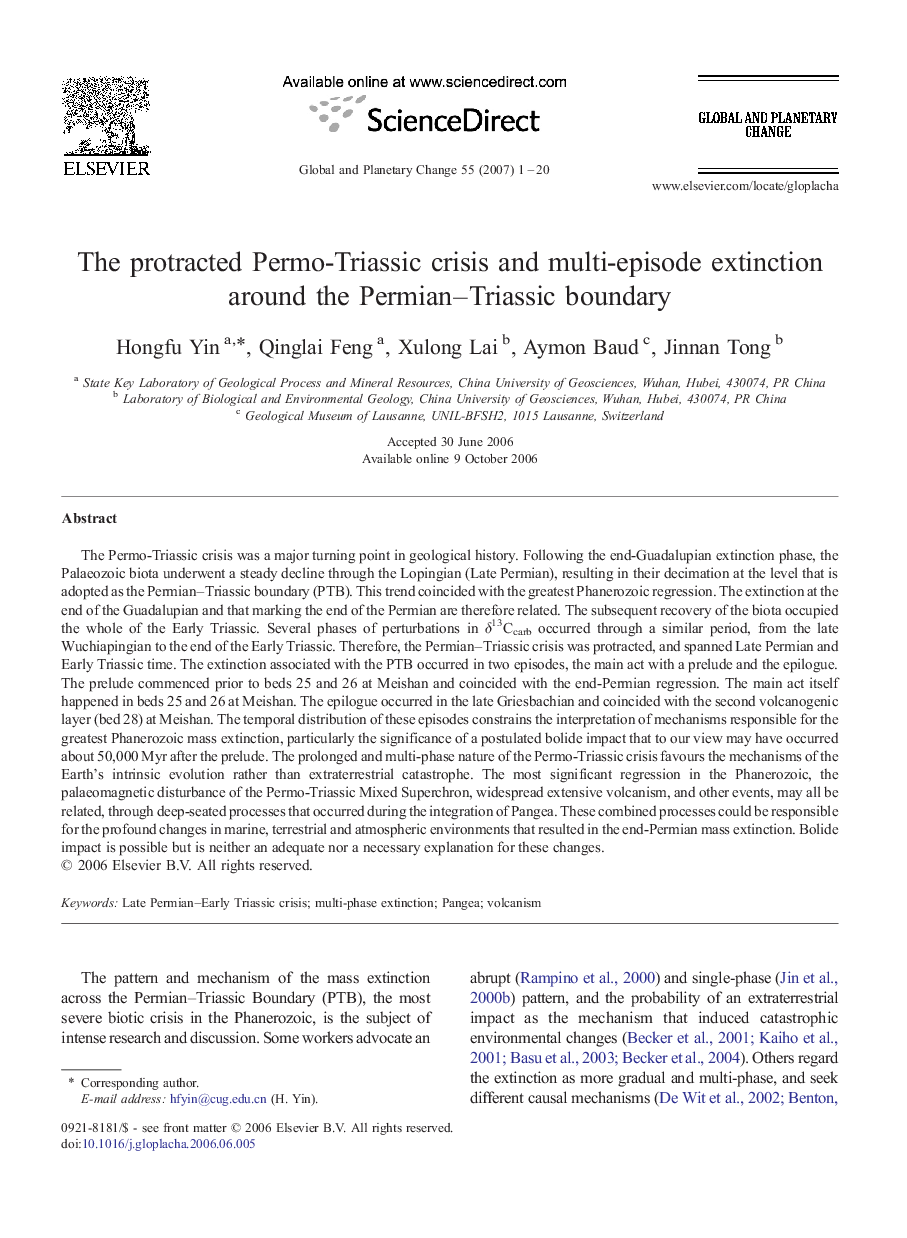| کد مقاله | کد نشریه | سال انتشار | مقاله انگلیسی | نسخه تمام متن |
|---|---|---|---|---|
| 4464412 | 1621732 | 2007 | 20 صفحه PDF | دانلود رایگان |

The Permo-Triassic crisis was a major turning point in geological history. Following the end-Guadalupian extinction phase, the Palaeozoic biota underwent a steady decline through the Lopingian (Late Permian), resulting in their decimation at the level that is adopted as the Permian–Triassic boundary (PTB). This trend coincided with the greatest Phanerozoic regression. The extinction at the end of the Guadalupian and that marking the end of the Permian are therefore related. The subsequent recovery of the biota occupied the whole of the Early Triassic. Several phases of perturbations in δ13Ccarb occurred through a similar period, from the late Wuchiapingian to the end of the Early Triassic. Therefore, the Permian–Triassic crisis was protracted, and spanned Late Permian and Early Triassic time. The extinction associated with the PTB occurred in two episodes, the main act with a prelude and the epilogue. The prelude commenced prior to beds 25 and 26 at Meishan and coincided with the end-Permian regression. The main act itself happened in beds 25 and 26 at Meishan. The epilogue occurred in the late Griesbachian and coincided with the second volcanogenic layer (bed 28) at Meishan. The temporal distribution of these episodes constrains the interpretation of mechanisms responsible for the greatest Phanerozoic mass extinction, particularly the significance of a postulated bolide impact that to our view may have occurred about 50,000 Myr after the prelude. The prolonged and multi-phase nature of the Permo-Triassic crisis favours the mechanisms of the Earth's intrinsic evolution rather than extraterrestrial catastrophe. The most significant regression in the Phanerozoic, the palaeomagnetic disturbance of the Permo-Triassic Mixed Superchron, widespread extensive volcanism, and other events, may all be related, through deep-seated processes that occurred during the integration of Pangea. These combined processes could be responsible for the profound changes in marine, terrestrial and atmospheric environments that resulted in the end-Permian mass extinction. Bolide impact is possible but is neither an adequate nor a necessary explanation for these changes.
Journal: Global and Planetary Change - Volume 55, Issues 1–3, January 2007, Pages 1–20